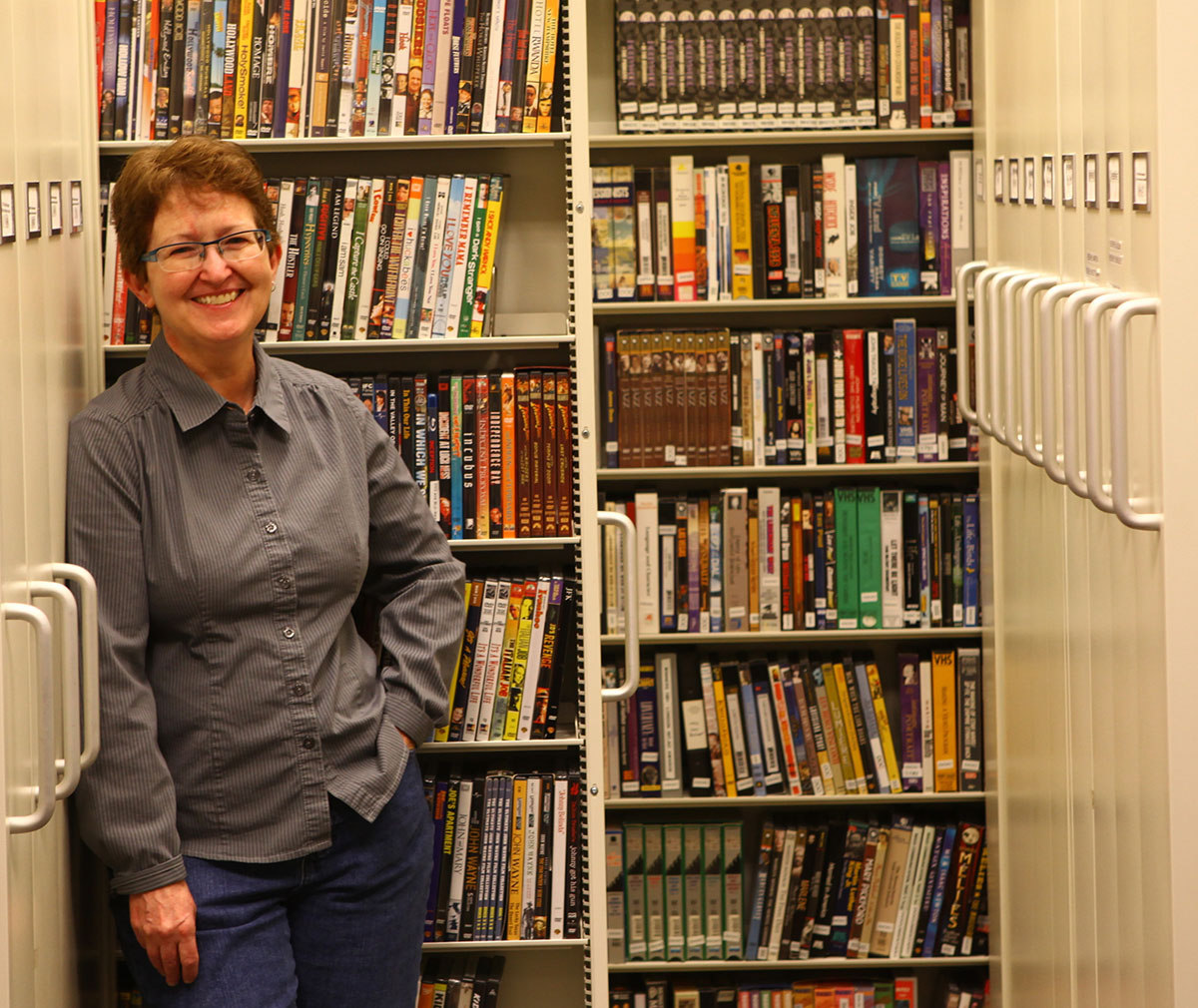Getting Gatsby
Film-Television-Digital Media Professor Joan McGettigan explores Hollywood’s fascination with F. Scott Fitzgerald’s elusive character.

Joan McGettigan, associate professor of Film Television and Digital Media, had students study older film adaptations of "The Great Gatsby." (Photography by Kathryn Hopper)
Getting Gatsby
Film-Television-Digital Media Professor Joan McGettigan explores Hollywood’s fascination with F. Scott Fitzgerald’s elusive character.
When The Great Gatsby was first published in 1925 it caused barely a ripple in the publishing world.
The novel about a self-made millionaire and his struggle for acceptance in high society failed to live up to the success of author F. Scott Fitzgerald’s earlier work This Side of Paradise. When he died in 1940 at the age of 44, The New York Times obituary noted: “The promise of his brilliant career was never fulfilled.”
But today Fitzgerald’s work is required reading for high school students and has inspired different film adaptations through the decades including the latest incarnation, a 3-D extravaganza starring Leonardo DiCaprio.
That made it the perfect case study in a class examining film aesthetics taught by Joan McGettigan, associate professor of Film Television and Digital Media (FTDM). A class project examined older versions of “Gatsby” that had been put on film including a 1949 version starring Alan Ladd, the 1974 Robert Redford-Mia Farrow film and a 2000 made-for-television production starring British actor Toby Stephens.
“I can count on the fact that they’ve all read it,” she says of the novel. “But they aren’t really given the opportunity to form an opinion about it in high school. They are given one interpretation and that’s it.
“I wanted the students to come back to something they had already read once and look at it in a new way,” she adds. “ ‘What do you think it’s about? and if you were making a movie, what would you emphasize and what would you leave out?’ ”
She wrote about the class and student reactions in a recent article in the Bright Lights Film Journal. Most students were not impressed with Stephens’ portrayal of Gatsby, finding him ineffectual and bland, she noted. Robert Redford also failed to impress and they objected to the style of the ‘70s era film.
 “They thought it was too slow and too pastel,” she says. “The long dissolves and long takes frustrated them to no end.”
“They thought it was too slow and too pastel,” she says. “The long dissolves and long takes frustrated them to no end.”
The Gatsby played by Ladd, one of the most popular actors of the ‘40s, got the best reviews from the class. McGettigan, whose research focuses on American film history, notes that Ladd fought to get Gatsby made despite the objections of the powerful Production Code Administration, which objected to Gatsby’s wealth coming from illegal gambling and bootlegging. Officials forced the studio to portray Gatsby as a hardened gangster to make his fall a cautionary tale.
“They had to make sure the characters were all punished for the things that they had done but it’s very difficult to make an ironic movie out of an ironic novel if you have to add this moral structure,” she says. “The novel had to be adopted in this weird way.”
But McGettigan says Ladd’s gritty take actually made the character more appealing to her students by being so edgy and tough. She also notes that, like Gatsby, Ladd had come from a poor background and made himself into a celebrity.
“Alan Ladd was appropriately cast; he understood the need to please and desire to succeed that Gatsby has—and also that nagging doubt that actors often feel and that Gatsby does too—the fear that he’s not quite up to it, that people will see through him.”
Unfortunately, the DiCaprio version was released after the class ended, but she says since it opened, she’s been receiving e-mails from students offering critiques. She says so far, about half approve of DiCaprio’s portrayal, but half think he’s lacking.
“He looks great, but he hasn’t convinced some people that he has the acting skills to bring real depth to the character,” McGettigan says.
She said director Baz Luhrmann’s high-energy style with lots of action and the use of modern songs from Jay Z and Lady Gaga have helped make the film accessible to a new generation.
“It might make younger audiences connect with the story,” she says. “If something is supposed to be universal you should be able to drop it into any timeframe and it should work.”
She said the director’s use of opulent sets enhanced with computer-generated images makes the film feel like an animated fairy tale. She argues that in that context, the characters and Fitzgerald’s eloquent dialogue actually seem more acceptable; realism is no longer important.
“You can have all kinds of excesses in a movie once you’ve said this is just a fairy tale, it bears no resemblance to the real world and that’s the approach this movie sees to take.
“That stylistic choice almost saves the movie in a way,” she adds. “You don’t have to judge it the same way, if it’s like an animated film, then anything can happen.”
Video:

Your comments are welcome
Comments
Related Reading:
Campus News: Alma Matters
TCU’s Library Celebrates a Century
Uncover hidden gems of the academic hub, from vintage mechanics to modern masterpieces.
Campus News: Alma Matters
Infographic: TCU’s Shared Values
The Board of Trustees adopted four TCU values after considering input from more than 4,000 constituents.